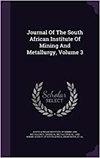Predicting open stope performance at an octree resolution using multivariate models
IF 0.9
4区 材料科学
Q3 Materials Science
Journal of The South African Institute of Mining and Metallurgy
Pub Date : 2023-01-01
DOI:10.17159/2411-9717/2770/2023
引用次数: 0
Abstract
Open stoping has become a popular mining method in hard rock mines, not only due to the safety of the method as a non-entry approach, but also because of the high extraction rate and low costs. At mine sites, stope performance is evaluated by calculating stope overbreak using the stability chart. However, limitations of the stability chart regarding the precision of the predictions, non-consideration of factors such as the influence of blasting, and the exclusion of underbreak have led to non-optimal designs. The capabilities of today's computers have increased the amount of data being collected and the power of models being built. This article presents a step towards a new stope design approach where stope overbreak and underbreak are measured and georeferenced using octrees at an approximately cubic metre resolution and predicted using multivariate statistical models (partial least square, linear discriminant analysis, and random forest). Results show that overbreak and underbreak location along the design surface and their magnitude are predicted with good precision using a random forest model. These predictions are used to build the expected geometry of the open stope. The resolution of the data and the use of multivariate analysis has enabled the prediction of variation in stope performance along the design surface, going well beyond the simple qualitative per stope face prediction provided by a traditional stability chart approach. Keywords: stope design, stope reconciliation, overbreak, underbreak, multivariate, prediction, random forest.利用多变量模型以八叉树分辨率预测空场性能
空场采矿已成为硬岩矿山的一种流行的采矿方法,不仅因为该方法作为一种非进场方法的安全性,而且还因为提取率高,成本低。在矿山现场,利用稳定性图计算采场超冲来评价采场性能。然而,稳定性图在预测精度方面的局限性,以及未考虑爆破影响等因素,以及未考虑底溃等因素,导致了非最优设计。当今计算机的功能增加了收集的数据量和建立模型的能力。本文提出了一种新的采场设计方法,使用八叉树以大约立方米的分辨率测量采场的上落和下落,并使用多元统计模型(偏最小二乘法、线性判别分析和随机森林)进行预测。结果表明,利用随机森林模型可以较好地预测设计面上的过断和下断位置及其大小。这些预测用于建立露天采场的预期几何形状。数据的分辨率和多变量分析的使用使得沿着设计面预测采场性能的变化成为可能,远远超出了传统稳定性图方法提供的简单的每个采场面定性预测。关键词:采场设计,采场协调,上冲,下冲,多元,预测,随机森林。
本文章由计算机程序翻译,如有差异,请以英文原文为准。
求助全文
约1分钟内获得全文
求助全文
来源期刊
CiteScore
1.50
自引率
11.10%
发文量
61
审稿时长
4-8 weeks
期刊介绍:
The Journal serves as a medium for the publication of high quality scientific papers. This requires that the papers that are submitted for publication are properly and fairly refereed and edited. This process will maintain the high quality of the presentation of the paper and ensure that the technical content is in line with the accepted norms of scientific integrity.

 求助内容:
求助内容: 应助结果提醒方式:
应助结果提醒方式:


